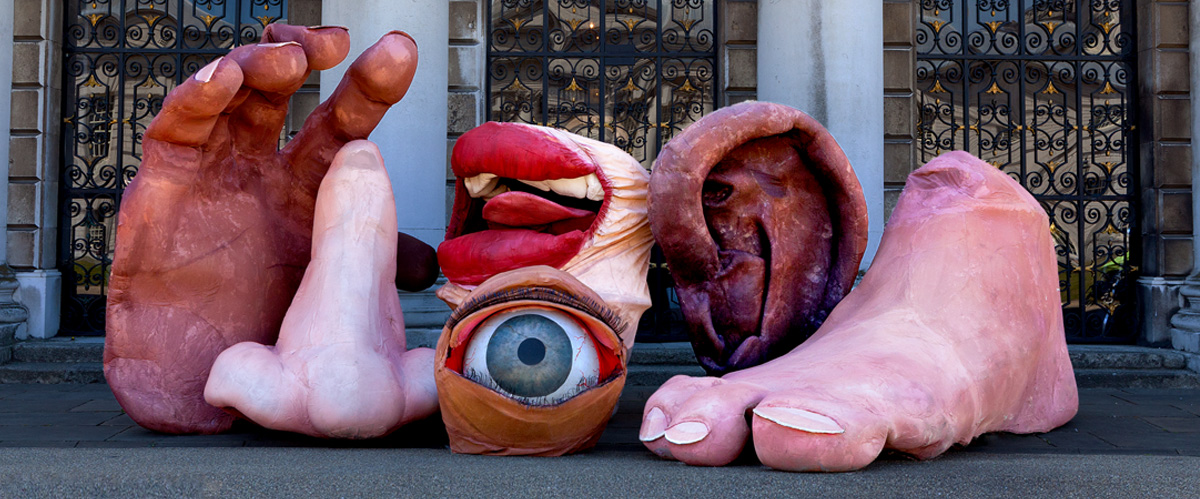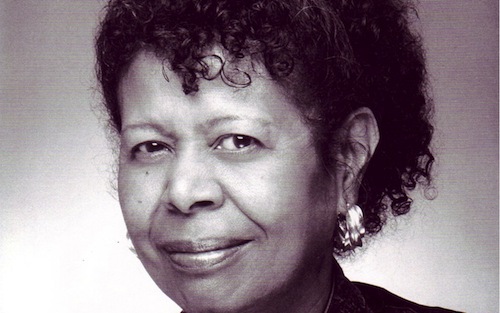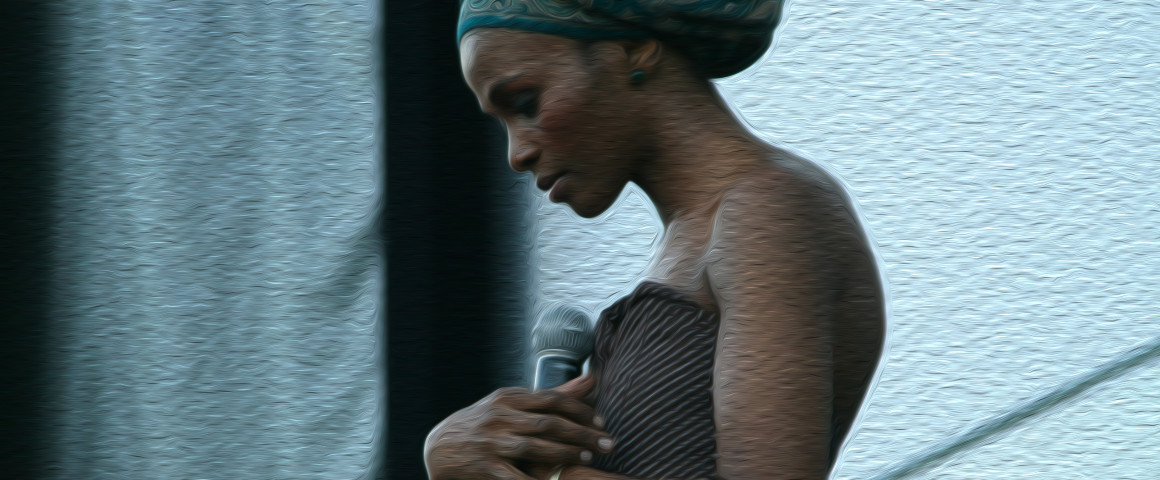The following is an excerpt from Spellbound: The Art of Teaching Poetry, a new book from Teachers & Writers Collaborative. Edited by Matthew Burgess, Spellbound offers a range of exciting ideas to inspire students of all ages to explore their potential as writers and creators.
Yusef Komunyakaa was born in Bogalusa, Louisiana, in 1947, and as a young boy he watched his carpenter father at work. He would go on to talk about how his father’s precision and process (measuring, cutting, shaping) later helped him to think about crafting poems. In a language steeped in Bible, speech, jazz music, and place, Komunyakaa brings memory, image, and gorgeous diction together to create lyrical texts that engage the legacies of war, race, human cruelty, and human survival.
In his poem “Anodyne,” Komunyakaa creates a self-portrait that is both ode and catalogue. With short lines (that work like breaths!) and in sentences that are sometimes long and sometimes short, he lists what he loves about his body.
Anodyne
I love how it swells
into a temple where it is
held prisoner, where the god
of blame resides. I love
slopes & peaks, the secret
paths that make me selfish.
I love my crooked feet
shaped by vanity & work
shoes made to outlast
belief. The hardness
coupling milk it can’t
fashion. I love the lips,
salt & honeycomb on the tongue.
The hair holding off rain
& snow. The white moons
on my fingernails. I love
how everything begs
blood into song & prayer
inside an egg. A ghost
hums through my bones
like Pan’s midnight flute
shaping internal laws
beside a trouble river.
I love this body
made to weather the storm
in the brain, raised
out of the deep smell
of fish & water hyacinth,
out of rapture & the first
regret. I love my big hands.
I love it clear down to the soft
quick motor of each breath,
the liver’s ten kinds of desire
& the kidney’s lust for sugar.
This skin, this sac of dung
& joy, this spleen floating
like a compass needle inside
nighttime, always divining
West Africa’s dusty horizon.
I love the birthmark
posed like a fighting cock
on my right shoulder blade.
I love this body, this
solo & ragtime jubilee
behind the left nipple,
because I know I was born
to wear out at least
one hundred angels.
I love that Komunyakaa lists what is crooked, misshapen, imperfect. He celebrates his body and the survival of his body. From lips, tongue, and hands to kidneys and bones, he lists parts of his body that are both visible to him and invisible (microscopic and/or internal). He also connects his body to a distant place of origin: “divining / West Africa’s dusty horizon.” His body is part of the world—carried by the world just as it carries the world. He reminds us that a body is also a place by comparing its organs, experiences, and shapes to things we associate with places: there is a storm in the brain and moons on the speaker’s fingernails.
Before I share the poem with students, I begin by inviting them to generate a list of places that they love or that they feel close to, such as the beach, library, or their grandmother’s home. I find that it’s always useful to model, with suggestions from the class, what I’m asking students to do every step of the way. For example, I’ll ask for a few volunteers to share one of the places that they’ve listed and I’ll write a few on the board. We then brainstorm details of those places:
sand clouds books pencils computers radio
lemon-colored walls the smell of fingernail polish
Again, as a group we’ll brainstorm the details that we associate with the places we’ve written on the board. The I’ll ask them to do this for their own personal places that they’ve written on their individual papers. I encourage students to consider all of their senses and to bring in as many sensory details as possible. You can make a list and the revise for sensory details. So the brainstorm above might turn into:
café con leche sand crying, heavy clouds books
pencils pocked with teeth marks….
Then we switch gears a little bit. I might say something like, I’m going to share a poem with you, but first I want us to take one more mysterious step in a new direction. I want us to think about how the body, too, is a place. Or I might say, So now that we’ve got these working lists, I’d like us to do one more thing before we read the poem. I might add, I know we’re jumping around, but I promise this will all tie together after we read the poem! I then share anatomical images of the human body on a projection or as photocopies that can be seen by several people at once. These have included images of the brain, the nervous system, the lungs, bones in a foot. Students name the images that they are familiar with and we discuss the ones they do not know.
Now we read Yusef Komunyakaa’s “Anodyne” and discuss how it makes us feel, where it gives us goosebumps, what we observe about the poem. (Its music moves and astounds me every time I read it. Love song, Blues catalogue of trouble, swaggery battle song, record of imperfection and loss.) We spend a long time observing the poem. Then we discuss how it’s working, what its projects are, what it’s enacting. In particular, I ask students to consider the “spleen floating / like a compass needle, inside/nighttime, always divining / West Africa’s dusty horizon” and “The white moons / on my fingernails.” We discuss the way Komunyakaa is cataloguing his body and also relating it to place.
Part of what I find moving about this poem and this activity is that it gives students a chance to think about their own bodies, to study (and celebrate!) the details of their particular faces and hands, and to imagine and praise the parts of the body that they can’t see. With this in mind, I often give each student a compact mirror (shout out to the 99 cents store), but the lesson works with or without the mirrors. If they are using mirrors, I ask students to choose three features from their face, hair, or hands that they can see, and three elements from the anatomy board to work with. If they are not using mirrors you can ask them to choose three features from their hands and three elements from the anatomy board. At first, students often giggle to study themselves while they’re in the classroom, but I find that they eventually become very interested. I ask them to study their nails, eyes, skin, teeth, eyebrows, hair—looking for striking or interesting details. Questions you might ask them to consider as they look: What shapes do you feel/see? What details do you notice? Do you notice veins, marks, squiggles, colors, textures, temperatures? What surprises you? Can you find a detail that you hadn’t noticed before?
Once students have their lists, I ask a few students to volunteer to let the group work with something from their list. As a class, we then try to make compelling metaphors and similes that compare the body to some of the details we’ve listed on the board.
Examples:
the lungs are an opened book
eyelashes dark & straight like tiny pencils
my heart is a red cloud raining red
Depending on the group and timing, or how many workshops I have with the group, I sometimes ask students to make different versions of these metaphors and similes (all on the board, collaboratively)—making them more or less detailed, playing with syntax or sound–as a way to get the group talking about possibilities and revision.
I then ask students to create odes to the body modeled after Komunyakaa’s. I ask them to merge the details of their special places with the body details that they’ve listed.
I love that Komunyakaa connects his body to places far from him (the moon, a horizon). He reminds us that a poem can bring things that are far from each other into close proximity. The lungs might be compared to the moon. The heart might be like the earth’s molten layer. I can imagine that it is my great-aunt Adey Zuphan (who tended a cornfield and died eight years ago) planting little rows of hair atop my head.
Another thing I admire and love about “Anodyne” is that in it, Komunyakaa celebrates what is often overlooked or uncelebrated. What a gift to remember that my body, with its crooked, goofy, imperfect parts, is the body that enables me to be. Chances are that my injured toes and my beating heart and my broken tooth and my tilted uterus won’t be celebrated by anybody else by me, so I better get to singing.
Aracelis Girmay is the author of the poetry collections Teeth, Kingdom Animalia, and the black maria. As an educator, she has facilitated poetry workshops with people of all ages, from people in pre-school to adults. Aracelis is from Southern California and lives with her family in New York.



